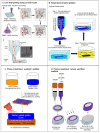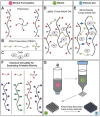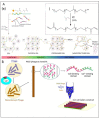Current Status of Bioinks for Micro-Extrusion-Based 3D Bioprinting
- PMID: 27231892
- PMCID: PMC6273655
- DOI: 10.3390/molecules21060685
Current Status of Bioinks for Micro-Extrusion-Based 3D Bioprinting
Abstract
Recent developments in 3D printing technologies and design have been nothing short of spectacular. Parallel to this, development of bioinks has also emerged as an active research area with almost unlimited possibilities. Many bioinks have been developed for various cells types, but bioinks currently used for 3D printing still have challenges and limitations. Bioink development is significant due to two major objectives. The first objective is to provide growth- and function-supportive bioinks to the cells for their proper organization and eventual function and the second objective is to minimize the effect of printing on cell viability, without compromising the resolution shape and stability of the construct. Here, we will address the current status and challenges of bioinks for 3D printing of tissue constructs for in vitro and in vivo applications.
Keywords: 3D printing; bioinks; biopolymers; bioprinting; printability; resolution.
Conflict of interest statement
The authors declare no conflict of interest.
Figures








References
Publication types
MeSH terms
Substances
LinkOut - more resources
Full Text Sources
Other Literature Sources

